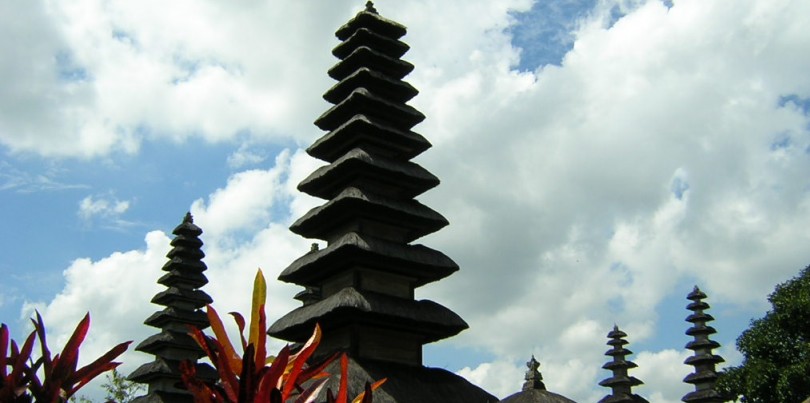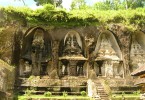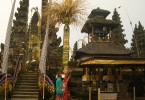Photo album: Taman Ayun Temple
The Taman Ayun Temple of Mengwi
Taman Ayun literally translates as ‘beautiful garden’ and is generally regarded as one of the most attractive temples of Bali. The Taman Ayun temple is situated in a beautiful park with trees and ponds, near the village of Mengwi in the south of Bali at about 8 km southwest of Ubud and 18 km northwest of Denpasar.
Pura Taman Ayun was built in 1634 by the Raja of Mengwi, I Gusti Agung Putu. It is a socalled Pura Kawiten or family temple, a special temple where the deified ancestors of the Raja Dynasty of Mengwi and important gods of other temples are honored.
The Taman Ayun temple is boardered by broad canals and it can only be entered via a bridge leading to a richly ornamented candid bentar, the gate which gives access to the outer courtyard (jaba) of the temple.
From this candi bentar a straight, paved footpath leads through the well maintained park past a square pond with a fountain exactly in its center. This fountain has nine water jets, four of which are positioned according the cardinal points, another four according the sub-cardinal points and the ninth in the center, symbolizing the Dewa Nawa Sanga, the nine main gods of Balinese Hinduism.
The footpath leads on to a second candi bentar which gives access to the jaba tengah, the more elevated, second courtyard of the temple. Inside the jaba tengah one finds the walled jaba jero, the third and most holy courtyard of the temple in which the most important shrines are located, among others a number of five, seven, nine and eleven tierd meru’s.
The jaba jero is only accessible during important religious ceremonies, such as the odalan – the day on which the inauguration of the temple is commemorated.
The odalan of the Taman Ayun temple takes place every 210 days on a day called Anggara Kasih, the Tuesday of the week Medangsia of the Balinese Pawukon calendar. The ceremonies of this odalan cover a period of several days.
share this article




[…] with a lot of swing set, but I was wrong. They make a better explanation about this better, check here! We’re charged IDR10,000 to get the entry ticket, it will be IDR20,000 for tourist. […]
[…] this temple was done sometime before 1556 Saka or 1634 AD, or about one year before the founding of Taman Ayun Temple, another temple also founded by I Gusti Agung Putu. The establishment of Pura Ulun Danu Beratan is […]